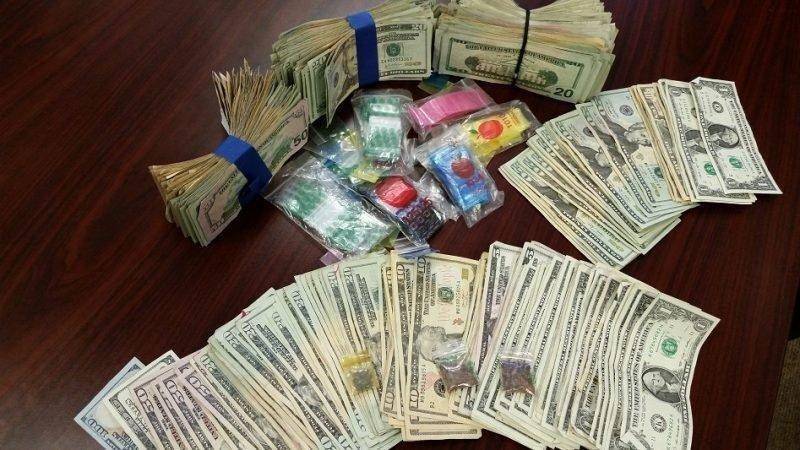Photo courtesy of the Carbon Metro Drug Task Force
It’s usually always one of the pictures included in news stories relating to drug seizures: bills upon bills folded, stuffed into envelopes, bound with a rubber band or lying loosely on a table.
Throughout the year 2015, based off of a combined 393 forfeited court cases, the Utah Commission on Criminal and Juvenile Justice (CCJJ) reported cash forfeitures reaching $1,882,047.
After the surprise and astonishment die down a little with a number like that, perhaps the next question that comes is where does all that money go?
Despite popular belief, it doesn’t all go back to the police force or the court system for shiny new cars or new suits. To find the answer, though, it takes a little background knowledge.
Price City Police Captain Bill Barnes as well as officials from the Carbon Metro Drug Task Force recently sat down with ETV 10 News to answer the question.
In seizing assets, phones and laptops will usually be returned after officers have retrieved any information they need. While cars and houses and other such property were seized in the past, they aren’t as often in Carbon County due to the state in which they are usually found.
Thus, for the purpose of simplicity, we’ll focus mainly on actual bills.
At the turn of the century, the law in Utah underwent several changes through House Bills, Senate Bills and a state-wide act to help amend the use and allocation of funds in forfeiture cases.
Previous to the new reforms, all assets seized went directly to whatever department had headed the seizure, bringing concern and questions over the legitimacy behind busts: where departments trying to enforce the law or make a profit?
Thus, several reforms were passed that have since had a ripple effect on the process.
The Utah Property Protection Act (Initiative B) passed in 2000, Senate Bill 175 passed in 2004, House Bill 427 (2014) and Senate Bill 52 in 2015 were cited by the CCJJ as those changes that had an impact on the issue, some calling for different reports or the option for funds to be sent to various entities.
Apart from the CCJJ, the Justice Reinvestment Initiative is another entity that has created ripples in the issue, reducing penalties for drug offenses on the basis that such issues are non-violent crimes in an attempt to treat rather than incarcerate those involved.
“There’s a lot of checks and balances on the money,” Captain Barnes said, explaining that nowadays with such acts and organizations in place no individual department may benefit from a seizure.
With such a history lesson under one’s belt and such a system firmly in place, the question still remains about where the money exactly goes.
Hypothetically speaking, if X amount of dollars was seized, whether at a patrol stop or part of a drug case, the money would be seized and held in an evidence room until the adjudication of the case. The alleged guilty party is given an Asset Seizure Notification Form outlining the items seized as well as the rights the individual has as far as returning the items.
The money is held as evidence until the individual is convicted or pleads guilty during court proceedings. From that point, the result branches off into a few hypothetical situations.
Hypothetical Situation A:
A resolution about the money is given by the court and the resultant distribution is spelled out clearly. After waiting for the end of an appeal period of 30 days, the police department puts the money into a fund and purchase orders are sent out to the various parties ordered by the courts to receive the money.
Those who may possibly receive portions include the CCJJ or the local attorney’s office. In rare cases, some of the funds may be allocated to the defense attorney in the case and, in even rarer circumstances, some of the money may be used by the task force or police department for work-related expenses after the money is sent to the CCJJ which determines the distribution of funds throughout agencies in the state.
Hypothetical Situation B:
If the case is prosecuted at the federal level, the department may opt for federal-level officials to handle the money to avoid further complications, in which case the funds may not be directly returned to the local area.
Hypothetical Situation C:
If the money is not brought up in the paperwork processed in court, the monies may be returned to the suspect.
In 2015, the State Asset Forfeiture Grant Program, created under Senate Bill 175, awarded a total of $2,500 for the Price City Police Department that was used for body cameras for officers.

